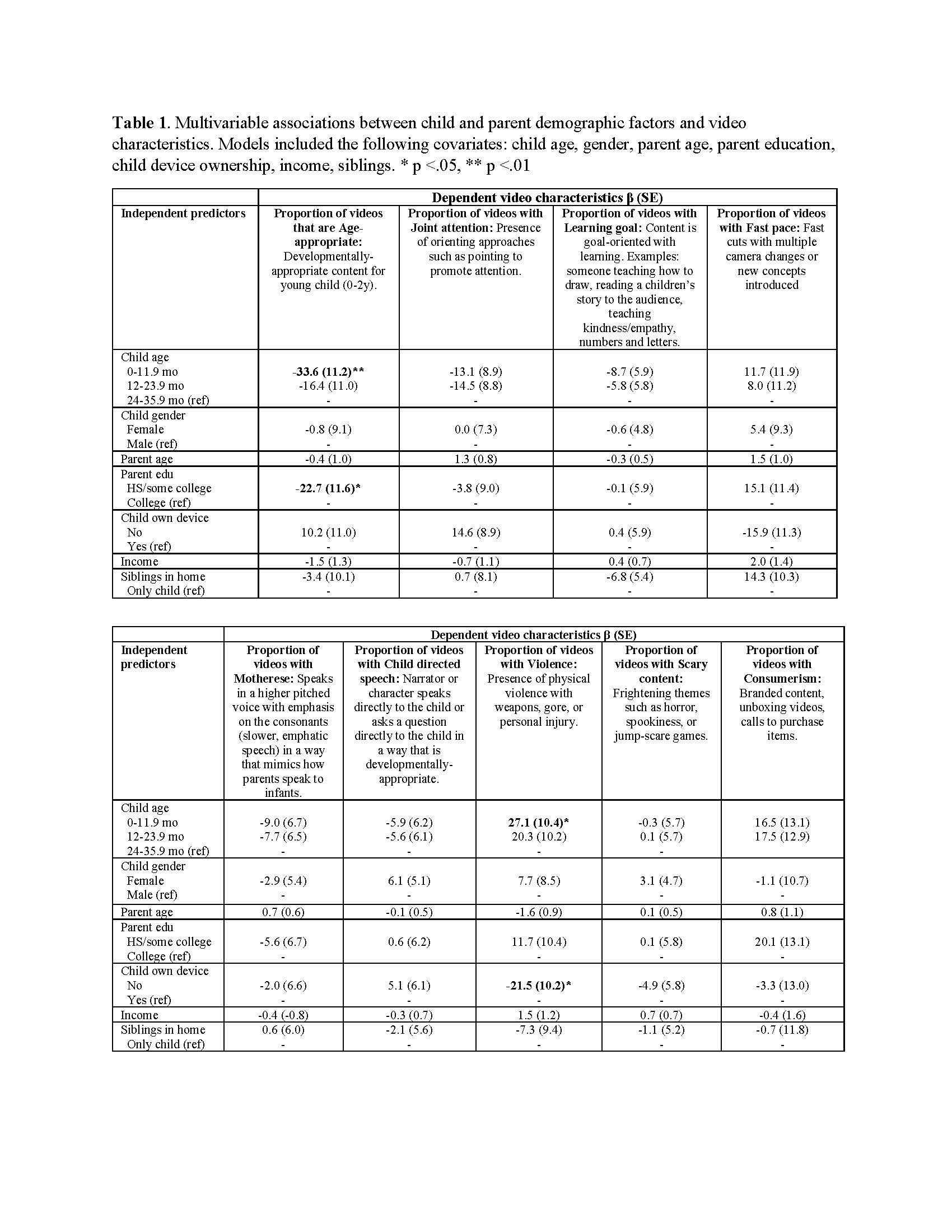Technology
Session: Technology 1
180 - YouTube for young children: What are young children watching on the most popular streaming app?
Sunday, May 5, 2024
3:30 PM - 6:00 PM ET
Poster Number: 180
Publication Number: 180.2267
Publication Number: 180.2267

Dahlia Henderson, B.S. (she/her/hers)
Pharmacy Tech/Student
University of Michigan
Birmingham, Alabama, United States
Presenting Author(s)
Background: Though toddlers may learn from well-designed digital content, more needs to be understood about content on YouTube, which currently represents the largest share of young children’s viewing.
Objective: Examine content of YouTube videos viewed by children 0-2 years of age and associations with child and family predictors of YouTube content characteristics.
Design/Methods: We completed a secondary analysis of data from the 2020 Common Sense “YouTube and Kids” report. Parents were surveyed about child media use, demographics, YouTube viewing history. We included 426 videos viewed by 47 children aged 0-2y11m. We developed a novel coding scheme adapted from prior work examining infant TV to characterize educational quality and approaches used to orient young children to content (age-appropriate, joint attention, learning goal, video pace, motherese, child-directed speech). 20% of videos were double coded to establish reliability (Kappa >0.70). Videos were previously coded for violence, scariness, and consumerism. Multivariable analyses controlling for covariates (child age, gender, parent age, parent education, child device ownership, income, siblings), examined associations between child and family characteristics and children’s videos in which YouTube content codes were present. Analyses completed on SAS 9.4.
Results: Of the children, 32% were 0-11.9 months old, 29% were 12-23.9 mo, 38% were 24-35.9 mo, and 26% had their own tablet device. Parents were on average 34 y, 68% attained a Bachelor’s degree, 72% were white, 13% were Black, 13% were Hispanic. Of the videos, 19% were age-appropriate, 18% had joint attention, 5% contained a learning goal, 63% were fast-paced, 27% had physical violence, 15% were scary, and 48% contained consumerism. Younger age (β -33.6 [11.2], p=.005), lower parent education (β -22.7 [11.6], p=.048) were associated with viewing less age-appropriate content. Younger age (β 27.1 [10.4], p=.01) and child having their own device were associated with viewing more violent content (β -21.5 [10.2], p=.04) (Table 1).
Conclusion(s): Though videos contained approaches designed to orient young children, children were being oriented to low-quality, violent, and consumerist content. Younger age predicted greater likelihood of viewing less age-appropriate and more violent content, suggesting parents or the YouTube algorithm may be selecting adult-oriented content for pre-verbal children. Young children owning their tablet device predicted exposure to violent content, suggesting that it may be harder for parents to supervise when devices are not shared.

